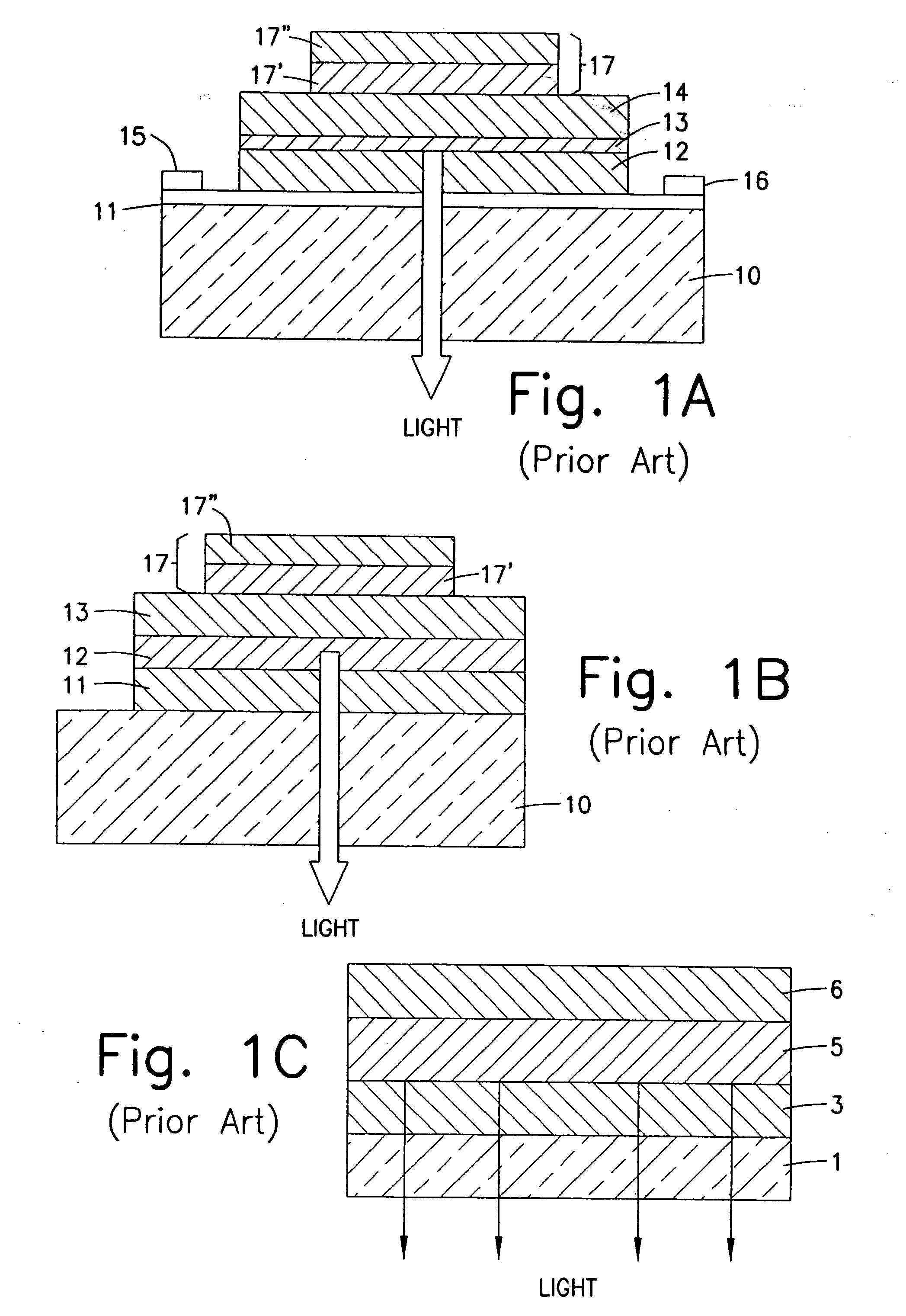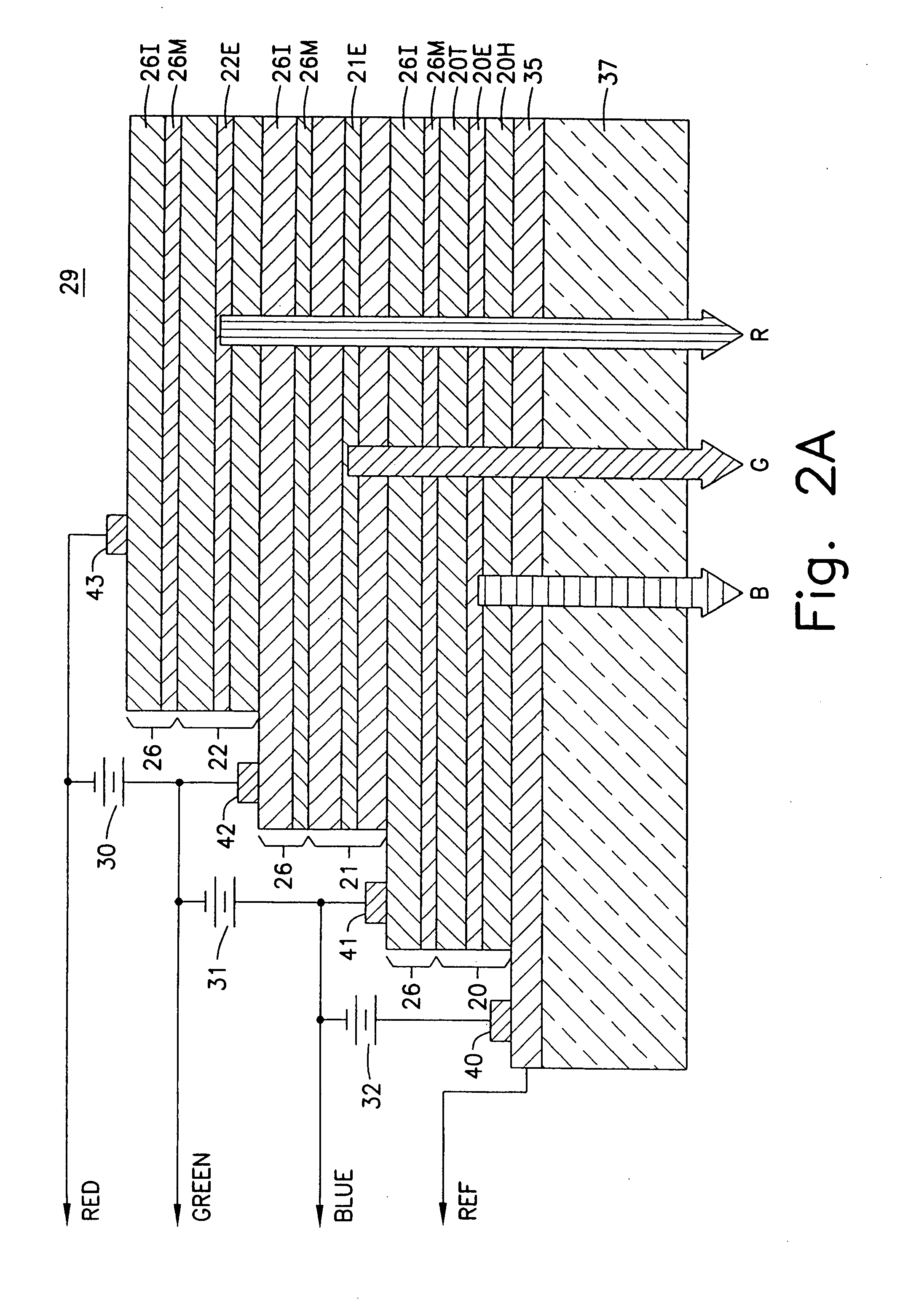Transparent contacts for organic devices
a technology of organic devices and contacts, applied in the direction of organic semiconductor devices, solid-state devices, discharge tubes/lamp details, etc., can solve the problems of low contrast and resolution, no other medium offers the speed, versatility and interactivity, and lcds operate, etc., to achieve high contrast and resolution, high reliability, and substantial transparency
- Summary
- Abstract
- Description
- Claims
- Application Information
AI Technical Summary
Benefits of technology
Problems solved by technology
Method used
Image
Examples
Embodiment Construction
[0037]FIG. 1A has been described and is a prior art double heterostructure organic light emitting device. The basic construction of the device of FIG. 1A is used in this invention as will be described.
[0038] Referring to FIG. 2A, there is shown a schematic cross section of a highly compact, integrated RGB pixel structure which is implemented by grown or vacuum deposited organic layers, in one embodiment of the invention. Based on the ability to grow organic materials on a large variety of materials (including metals and ITO), one can construct a stack of LED double heterostructures (DH) designated as 20, 21 and 22, in one embodiment of the invention. For illustrative purposes, LED 20 is considered in a bottom portion of the stack, LED 21 in a middle portion of the stack, and LED 22 in a top portion of the stack, in the example of FIG. 2A. Also, the stack is shown to be vertically oriented in FIG. 2A, but the LED can be otherwise oriented. In other embodiments, a stack of single het...
PUM
| Property | Measurement | Unit |
|---|---|---|
| thickness | aaaaa | aaaaa |
| work function | aaaaa | aaaaa |
| luminescent external quantum efficiencies | aaaaa | aaaaa |
Abstract
Description
Claims
Application Information
 Login to View More
Login to View More - R&D
- Intellectual Property
- Life Sciences
- Materials
- Tech Scout
- Unparalleled Data Quality
- Higher Quality Content
- 60% Fewer Hallucinations
Browse by: Latest US Patents, China's latest patents, Technical Efficacy Thesaurus, Application Domain, Technology Topic, Popular Technical Reports.
© 2025 PatSnap. All rights reserved.Legal|Privacy policy|Modern Slavery Act Transparency Statement|Sitemap|About US| Contact US: help@patsnap.com



